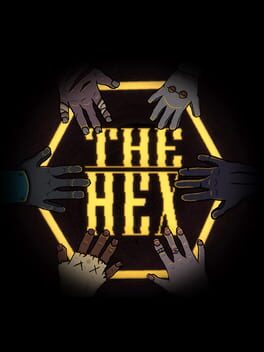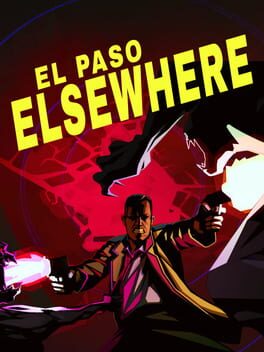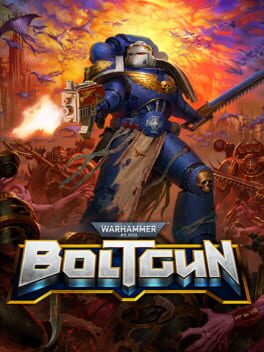tgeoghegan
116
Total Games Played
000
Played in 2024
039
Games Backloggd
Recently Reviewed See More
This review contains spoilers
This game is weird, because it's hard to give a rating. Thing is, it's kind of uneven. It's very good in some places, and a bit annoying in others.
OK, so it's a metagame thing, where the real story is about the developer of all the games the different player characters are from. It's cute, it's well done, there's clever stuff in it. The ending especially and is pretty impactful. When this game comes together and is working, it really, really works well. But the problem is that this game is also a tour through these different genres like fighting games or RPGs, and some of these bits drag.
In particular, the middle chapter is a sendup of "classic" (that is, shitty) JRPGs. It's making fun of how those games had boring and repetitive combat, gruesomely overwritten dialog and were three times too long. It makes you do three different boss fights to get the orbs so you can move on. I get that this is the structure of the exact games it's making fun of, where getting to do the same three things as everyone else but in the order you want lets the games claim they have choice and consequences. But it's a tedious padding technique in those games and it has the exact same effect here!
Another complicated feature is the puzzles toward the end. Going from game-within-a-game to game-editor-within-a-game is really clever, and it's a good device paired with the metacommentary from Lionel Thingie. But the puzzles themselves are nakedly stolen from The Witness. Now, listen, I'm not judging anyone for stealing ideas (I think Picasso was right about that one), but the problem is that in a game that really wants you to think about their creators, and what they say about their games, and whether they're assholes or not, then going anywhere near the question of Jonathan Blow is something that's hard for the audience to treat as accidental. I mean, are we to understand that Lionel Thingie is being compared to Blow? What's the point being made there?
And finally, while the final Walk segment is effective both as a poke at walking sims and a climax of the game, the problem is that the whole concept is lifted from The Beginner's Guide! Once again, I like it when good ideas from one work are used in another, but this is too blatant. Is the plagiarism the point? Is this game a response to that game somehow?
Still, you have to give credit to any game that can prompt a little thought like this. This sure is saying something. I also really dug the visual style. It's simple 2D, but I think it's effective, and the style is also agreeably consistent throughout the game. I thought the transformations into the top-down shooter and JRPG perspectives were quite clever, too.
OK, so it's a metagame thing, where the real story is about the developer of all the games the different player characters are from. It's cute, it's well done, there's clever stuff in it. The ending especially and is pretty impactful. When this game comes together and is working, it really, really works well. But the problem is that this game is also a tour through these different genres like fighting games or RPGs, and some of these bits drag.
In particular, the middle chapter is a sendup of "classic" (that is, shitty) JRPGs. It's making fun of how those games had boring and repetitive combat, gruesomely overwritten dialog and were three times too long. It makes you do three different boss fights to get the orbs so you can move on. I get that this is the structure of the exact games it's making fun of, where getting to do the same three things as everyone else but in the order you want lets the games claim they have choice and consequences. But it's a tedious padding technique in those games and it has the exact same effect here!
Another complicated feature is the puzzles toward the end. Going from game-within-a-game to game-editor-within-a-game is really clever, and it's a good device paired with the metacommentary from Lionel Thingie. But the puzzles themselves are nakedly stolen from The Witness. Now, listen, I'm not judging anyone for stealing ideas (I think Picasso was right about that one), but the problem is that in a game that really wants you to think about their creators, and what they say about their games, and whether they're assholes or not, then going anywhere near the question of Jonathan Blow is something that's hard for the audience to treat as accidental. I mean, are we to understand that Lionel Thingie is being compared to Blow? What's the point being made there?
And finally, while the final Walk segment is effective both as a poke at walking sims and a climax of the game, the problem is that the whole concept is lifted from The Beginner's Guide! Once again, I like it when good ideas from one work are used in another, but this is too blatant. Is the plagiarism the point? Is this game a response to that game somehow?
Still, you have to give credit to any game that can prompt a little thought like this. This sure is saying something. I also really dug the visual style. It's simple 2D, but I think it's effective, and the style is also agreeably consistent throughout the game. I thought the transformations into the top-down shooter and JRPG perspectives were quite clever, too.
A sort of boomer shooter take on Max Payne, though actually the graphics are even more of a throwback than its inspiration. But the diving and slow motion mechanics are definitely from MP. However this game is much, much more focused on melee enemies, which means you never really need to dodge enemy projectiles. It's more that you slow down time so you can assess what kinds of enemies you're up against, prioritize accordingly and then select appropriate weapons. e.g., angels and witches/brides are a priority because they do ranged, area of effect damage. Automatic weapons or the rifle are good for the former, but a headshot with the handgun suffices for the latter. Then you want to deal with the werewolves, because their leap attack lets them swiftly close the distance. Then you deal with the ghoul/vampires, who will get into range much more slowly, and finally switch to the shotgun to dispatch the animated suits of armor, who do huge damage but often will stay perfectly still until you trigger them.
So all very fun, but finally not very difficult except for rare scenarios where you are up against large numbers of enemies. And even then, it's only challenging the first time, because the second time through you know the enemy placement and can prioritize better.
Still, the feeling of mastery from slowing down time and then efficiently dispatching a roomful of enemies with a half-dozed perfect headshots doesn't really get old. Also, kudos on good monster design that makes the enemy weakpoints easy to target, even in poor lighting. It also helps that the levels are so short, which keeps the pace fast and stops the game from dragging. And it's impressive that at 50 levels, the game doesn't quite outstay its welcome, though I was about done with it.
The visuals are extremely cool, and it's impressive what they can achieve with the low poly count and not excessive visual effects. The music works, too, getting your blood pumping for particularly exciting rooms.
The boss fights are a mixed bag. You repeatedly fight one enemy type where you have to shoot down 1/3 or 1/4 of their health bar and then stake them. That's clever, because it forces you to take some risks with melee combat, as staking is otherwise an "oh shit", get-out-of-jail-expensively card you play when you messed up and get cornered. But in practice, there's usually a narrow or low doorway nearby that the huge boss model will get stuck on, so it's easy to cheese about 3/4s of the Burned Man's appearances.
The boss midway through (on level 25 or 30 or so) is a HUGE difficulty spike (or maybe I'm just terrible and failed to learn its attack patterns). Even the endboss was not nearly as hard.
Last thing I'll note is that while I admire the game's commitment to its tone and themes, I did find that the slightly overwritten melodramatic style was wearing thin by the end. Also, the bulk of the game is about a bad relationship, and the theme of addiction that emerges in the last few cutscenes and levels is somewhat underdeveloped.
So all very fun, but finally not very difficult except for rare scenarios where you are up against large numbers of enemies. And even then, it's only challenging the first time, because the second time through you know the enemy placement and can prioritize better.
Still, the feeling of mastery from slowing down time and then efficiently dispatching a roomful of enemies with a half-dozed perfect headshots doesn't really get old. Also, kudos on good monster design that makes the enemy weakpoints easy to target, even in poor lighting. It also helps that the levels are so short, which keeps the pace fast and stops the game from dragging. And it's impressive that at 50 levels, the game doesn't quite outstay its welcome, though I was about done with it.
The visuals are extremely cool, and it's impressive what they can achieve with the low poly count and not excessive visual effects. The music works, too, getting your blood pumping for particularly exciting rooms.
The boss fights are a mixed bag. You repeatedly fight one enemy type where you have to shoot down 1/3 or 1/4 of their health bar and then stake them. That's clever, because it forces you to take some risks with melee combat, as staking is otherwise an "oh shit", get-out-of-jail-expensively card you play when you messed up and get cornered. But in practice, there's usually a narrow or low doorway nearby that the huge boss model will get stuck on, so it's easy to cheese about 3/4s of the Burned Man's appearances.
The boss midway through (on level 25 or 30 or so) is a HUGE difficulty spike (or maybe I'm just terrible and failed to learn its attack patterns). Even the endboss was not nearly as hard.
Last thing I'll note is that while I admire the game's commitment to its tone and themes, I did find that the slightly overwritten melodramatic style was wearing thin by the end. Also, the bulk of the game is about a bad relationship, and the theme of addiction that emerges in the last few cutscenes and levels is somewhat underdeveloped.
It's a perfectly good boomer shooter that nails both the 90s shooter and 40k esthetics. It does exactly what you'd want it to do. But I wound up having to put it down for a few weeks about halfway through the single player campaign (I was traveling and away from the sole computer I could play it on) and when I returned, I didn't feel compelled to play more of it or finish the campaign. I'm sure there were probably a couple more enemy types to see, maybe a weapon, definitely a boss or two. But I felt like I'd already seen what the game wanted to show me, and understood what the game is about, to the point that I'd prefer to invest time in some other game instead. Certainly the barely-there plot didn't demand resolution.
I don't know if that's a critique of this game in particular, or the boomer shooter thing in general. I think it's worth noting that this game is very clear about what it wants to accomplish, and it really nails that. The developers should be congratulated as far as that goes. But beyond the nostalgia factor, the sensation of playing the shareware Knee Deep in the Dead again, there's just not that much here.
One other, more specific critique: the game gives you a chainsword (classic bit of 40k gear) and attendant melee mechanics, but I don't think they work. I never got a handle on charging up the chainsword and then using it, and it never felt like it did enough extra damage to justify the risk of using it versus a more conservative strategy of firing from behind cover. I think melee combat in this game needed more work to make it easier to use and more powerful.
I don't know if that's a critique of this game in particular, or the boomer shooter thing in general. I think it's worth noting that this game is very clear about what it wants to accomplish, and it really nails that. The developers should be congratulated as far as that goes. But beyond the nostalgia factor, the sensation of playing the shareware Knee Deep in the Dead again, there's just not that much here.
One other, more specific critique: the game gives you a chainsword (classic bit of 40k gear) and attendant melee mechanics, but I don't think they work. I never got a handle on charging up the chainsword and then using it, and it never felt like it did enough extra damage to justify the risk of using it versus a more conservative strategy of firing from behind cover. I think melee combat in this game needed more work to make it easier to use and more powerful.



